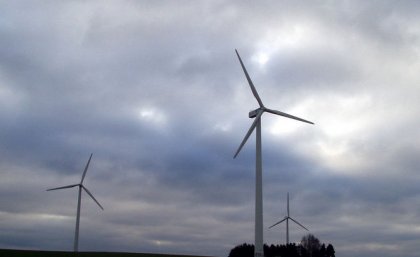
This article was originally published on The Conversation.
By Craig Froome, The University of Queensland.
You may have seen recent reports that Australia’s renewable energy sector is suffering. According to a Bloomberg analysis, investment in the sector in the year to September 2014 was down 70% on investment during the 12 months previous.
The report attributed this decline to the ongoing uncertainty over the future of the Renewable Energy Target (RET). The coalition’s position is currently to cut the 41,000-gigawatt-hour target to a “real 20%”, and is negotiating to pass the changes through government.
But there are a number of other policy uncertainties affecting the sector.
An uncertain future
The RET has come under much scrutiny in recent months as the federal government attempts to wind it back. This has also seen the government — both federal and state — take a negative approach to policy measures that promote more renewable energy in the energy system.
The result is that many proposed projects that factored in income from the RET have been put on hold, due to the uncertainty of their future income. In the shadow of this uncertainty, finding finance for projects is also a major issue as financiers become more wary.
As stated in the RET review, its objectives are to “encourage the additional generation of electricity from renewable sources; reduce greenhouse gas emissions in the electricity sector; and ensure that renewable energy sources are ecologically sustainable".
Still, the government’s opinion is that with surplus electricity generation (and decreasing demand) the only future value of the target is to help Australia meet its emissions reduction target of 5% below 2000 levels by 2020.
Therefore, the financial incentives that could drive investment in renewable energy infrastructure are instead being utilised for other key government initiatives.
While the legislation to repeal the RET has failed to pass through the Senate, it still isn’t clear what funding will be available for future projects.
The federal vs state policy divide
While the RET and Emission Reduction Fund are federal, other incentives to promote deployment – such as feed-in tariffs for solar rooftops – have been left to the states.
This is further complicated as legislation is divided between departments. For example on a federal level legislation is divided between the industry and environment departments, so nobody has outright responsibility.
While the federal government has completed its review of the RET, no decision has yet been made in relation to what action should be taken moving forward. It is unlikely that anything will happen soon with the current difficulties getting legislation through the senate, and the public outcry opposing change to the RET from those that control the votes.
It is here that the Australian Renewable Energy Agency (ARENA) and Clean Energy Finance Corporation (CEFC) have filled the void. Similar to the RET, the federal government has tried to wind back their operations.
The CEFC seems to have a more certain future, as they recently announced that they would look closely at energy efficiency projects that support the Emissions Reduction Fund.
This may result in less funding available for renewable energy projects, although under the CEFC Act funding “is designated for investment in renewable energy technologies”. To date 56% of funding has been for renewable energy projects, primarily wind and solar panels.
Not just a funding issue
Most renewable technologies (particularly those considered commercially mature) are intermittent by nature. As renewables increase their penetration into the grid, service providers are becoming more and more cautious when they negotiate connection agreements because it introduces a less reliable supply of electricity. This caution could add costs to renewable projects, as well as create delays when trying to obtain approval.
For independent renewable project developers, as opposed to companies such as AGL which generate and distribute renewable energy, there is the added problem of selling the electricity generated with financiers in a long-term Power Purchase Agreement. The requirement for retailers to purchase renewable energy is a requirement under the RET.
The uncertainty that surrounds the future of the RET has also made it difficult to obtain a Power Purchase Agreement, particularly at the speed required for many projects to be financially viable.
Growing renewable consumption
Although electricity demand continues to fall, the consumption of renewable energy has increased by 11.5%. This is primarily driven by solar panels where consumption increased by 49.2%.
The majority of solar panels are domestic roof-top systems, with Australia still well behind most developed countries for utility, commercial and industrial size projects.
Commercial and industrial size solar panel systems are fast approaching the point of being cost competitive when compared to traditional forms of generation (particularly when replacing diesel). This means traditional sources of finance are now more comfortable funding projects.
The same is true for wind farms, where the technology is now mature. However, the same cannot be said for emerging and hybrid technologies as these aren’t competitive yet.
The uncertain future of new renewable energy projects will continue until there is greater assurance in relation to the policy measures currently in place. A more robust emissions policy could strengthen the sector, and allow us to strive for more clean energy generation.
At the end of the day, developers need surety that policy decisions will not affect the future financial viability of their projects. Until then they will continue to sit on the fence and wait – to the detriment of the renewable energy sector as a whole.
![]()
.jpg)









